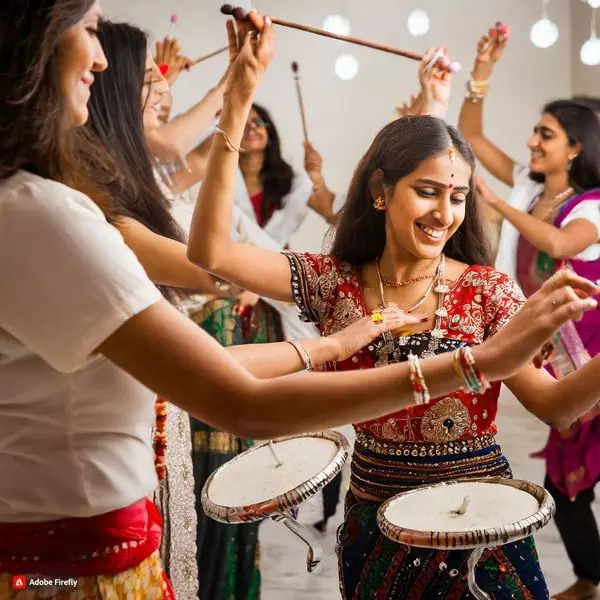In a landmark decision, the Intergovernmental Committee for the Safeguarding of the Intangible Cultural Heritage has added the vibrant “Garba of Gujarat” to the Representative List of the Intangible Cultural Heritage of Humanity. This significant recognition, made during the 18th session in Kasane, Botswana, further solidifies India’s cultural legacy and marks its 15th inscription on the prestigious list.
Garba, a traditional and devotional dance deeply rooted in the state of Gujarat and celebrated across India, has been included in UNESCO’s Representative List during the ongoing session. The dance is an integral part of the nine-day Navaratri festival, dedicated to the worship of feminine energy or Shakti. Garba, with its ritualistic and devotional significance, is performed in various settings, including homes, temple courtyards, public spaces, urban squares, streets, and large open grounds, turning it into a participatory community event.
Tim Curtis, the Director of UNESCO New Delhi Regional Office for South Asia, expressed heartfelt congratulations to India, its people, and the teams involved in the nomination process. Curtis hopes that this recognition will not only ensure the continuity of the Garba tradition but also inspire the younger generation to uphold the associated knowledge, skills, and oral traditions.
Garba, over the decades, has become an integral part of Gujarati culture both in India and among the global Indian diaspora. Its continued vibrancy as a living tradition extends beyond its religious roots. Garba serves as a unifying force, breaking down socio-economic, gender, and rigid sect structures, and fostering social equality. The dance remains inclusive and participative, embraced by diverse and marginalized communities, thereby strengthening community bonds.
The 18th session of the Intergovernmental Committee, hosted by the Republic of Botswana, evaluates nominations from States Parties for inscription on various lists. Besides ‘Garba of Gujarat,’ other newly inscribed elements include Rickshaws and Rickshaw painting in Dhaka, Bangladesh; Songkran, the traditional Thai New Year festival in Thailand; Hiragasy, a performing art of the Central Highlands of Madagascar; Junkanoo from the Bahamas; and the Procession and celebrations of Prophet Mohammed’s birthday in Sudan, among others.
The Representative List of the Intangible Cultural Heritage of Humanity, under the 2003 UNESCO Convention, currently boasts 704 elements from 143 countries across 5 regions. This extensive list serves to highlight the diversity of intangible heritage, raising global awareness of its importance. UNESCO’s objective is to safeguard the intangible cultural heritage of communities worldwide by enhancing the viability of their cultural practices and know-how.
The inclusion of ‘Garba of Gujarat’ on UNESCO’s Representative List is not just a recognition of a cultural tradition but a celebration of the diversity and richness of India’s heritage. As Garba takes its place alongside other revered elements from around the world, it reinforces the importance of preserving and promoting the intangible cultural treasures that bind communities across borders. This acknowledgement by UNESCO serves as a testament to the enduring global significance of Garba and its role in fostering unity and cultural understanding.
Also Read: India’s Annual CO2 Emissions Continue To Rise For Consecutive Second Year: Report













